What is food processing?
Food processing turns simple ingredients into the wide variety of foods and drinks we enjoy today.
The process takes raw food, like a tomato, and changes it using different methods of food processing.
In this article you can learn:
- the importance of food processing
- types of food processing
- how grains are processed
- advantages of food processing
- ultra-processed foods and disadvantages of food processing
This resource is suitable for Health and Wellbeing for primary school learners.
Video - Food processing
In this video, the Great Spoon explains the importance of food processing and different methods of food processing.
Find out how food processing turns simple ingredients into a wide variety of foods and drinks.
TOMATO Alright catch you guys later. No worries. I’ll just… wait here. Nae bother. I'm not scared. I am a strong independent tomato.
MYSTERIOUS VOICE Hellooo!
TOMATO Argh!!! Stay back! I know… karate?
PASTA SAUCE We’ve been wanting to introduce ourselves, Tomato!
CHORUS Tomato…
TOMATO You… know me?
PASTA SAUCE You're one of us.
CHORUS One of us…
TOMATO That's…very creepy.
CHORUS Very creepy…
PASTA SAUCE We are your friends! We all have tomato as an INGREDIENT!
CHORUS Ingredi-
PASTA SAUCE OK that’s getting annoying now guys. We are all made of tomato! Tomato ketchup, chopped tomato, even sundried tomatoes!
SUNDRIED TOMATOES Actually, it's a tan.
PASTA SAUCE And me - pasta sauce.
TOMATO But you’re not round and cute like me! What's going on?
PASTA SAUCE The Great Spoon will explain!
CHORUS The Great Spoon!
THE GREAT SPOON Things can look and taste different but share the same ingredients.
TOMATO Wait. You get your facts from a spoon?
THE GREAT SPOON A tomato is a raw fruit. Raw foods, like tomatoes, can be processed into different food products - chopped and tinned, blended into a sauce, even dried. Some products have lots of ingredients - foods that are mixed together to make something new.
PASTA Like us! I’m pasta, this is bread We’re mostly made of wheat. It says on my ingredients label. That’s why we’re best friends! We’ve got so much in common!
BREAD Not really…
PASTA But we're both made of wheat
THE GREAT SPOON …and other different ingredients. And you have been processed differently. So you look different. You even taste different.
PASTA I don’t believe that… Oh… You're right. We do taste different.
BREAD So you can put your tongue away now.
PASTA Sorry.
TOMATO Well that was embarrassing…
CHORUS Embarrassing…
How is food processed?
There are many different ways food can be processed to make it taste different, safer to eat or last longer.
Here is a list of examples of food processing:
- adding other ingredients
- cooking
- freezing
- blending
- chopping
- packaging
How are grains processed?
- Many foods cannot be eaten in their raw form, like wheat. (Find out more about human digestion in this science article)
- Wheat comes from a group of cereal grasses that are grown to produce grains.
- Other types of grain include oats, barley, rye and maize.
- Wheat is a very popular grain because it can be ground to make flour, which is the main ingredient in many different foods.
- Grains can be found in a wide variety of foods from bread and pasta to breakfast cereals.
- Some grains are even grown for feeding farm animals whose meat we eat.

Image caption, Wheat comes from a group of cereal grasses that are grown to produce grains.
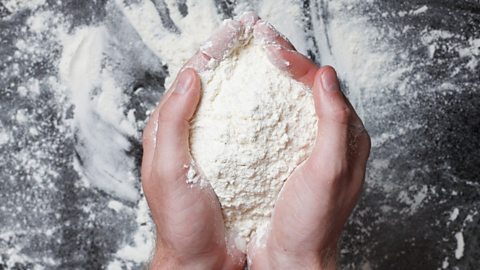
Image caption, Wheat is a very popular grain because it can be ground to make flour which is the main ingredient in many different foods.
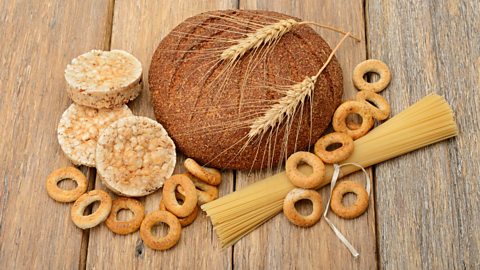
Image caption, Grains can be found in a wide variety of foods like bread, pasta, pastries and other snacks.
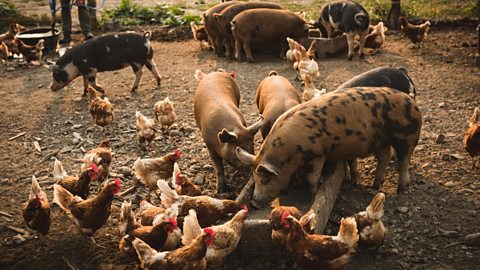
Image caption, Some grains are fed to farm animals.
1 of 4
What are the advantages of food processing?
Food processing is an important part of modern life and it has many advantages:
- Raw fresh food can be transformed to make them last longer, like sun dried tomatoes.
- Foods can be mixed to make lots of exciting options. For example, maize can be processed to make corn flakes and tortilla chips.
- We have access to an amazing variety of foods from all over the world because they can be preserved and packaged for transport.
- Some processing just makes food safe for us to eat. For example milk is pasteurised to kill off harmful bacteria.
- Some fruit and vegetables can be frozen to preserve vitamins and other nutrients. For example, peas are frozen as soon as they are picked so that we get all the good stuff before they start to age.
What are the disadvantages of food processing?
Many processed foods, like tinned tomatoes or frozen peas, are good alternatives to fresh food because they last longer so we waste less. However, there are disadvantages to processing food too:
- When food is processed, important nutrients can sometimes be removed. Peeling fruit, vegetables and whole grains can remove fibre. For example, when potatoes are peeled to make chips, a lot of the fibre is lost.
- Some processed foods have ingredients added to them to make them taste better or last longer, like lots of salt or sugar. Large quantities of these ingredients are not healthy for us.
What are ultra-processed foods?
‘Ultra-processed foods’ are foods that have lots of ingredients in them and contain additives that you wouldn’t use in home cooking, such as preservatives and artificial colours. For example, ice-cream or biscuits are often ultra-processed foods.
Ultra-processed foods can be low in nutrients so we should only eat small amounts of them to have a healthier diet.
Test your knowledge
Quiz - Food processing
Try this short true-or-false quiz to check your knowledge on food processing.
Challenge - How has your food been processed?
Think of one food product from the fridge, freezer or cupboard that has been processed.
Why and how has it been processed?
Here are some ideas of processed foods to get you started:
- Tinned foods
- Dried foods
- Frozen vegetables
More on Food and health
Find out more by working through a topic
- count8 of 10
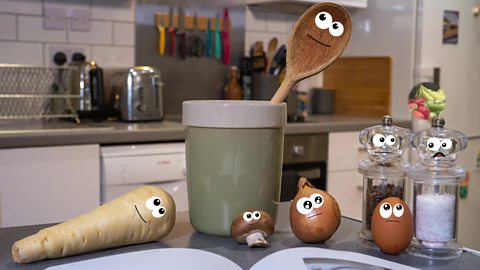
- count9 of 10
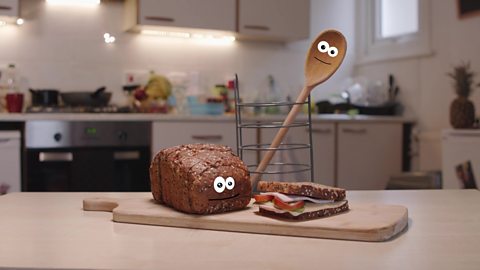
- count10 of 10
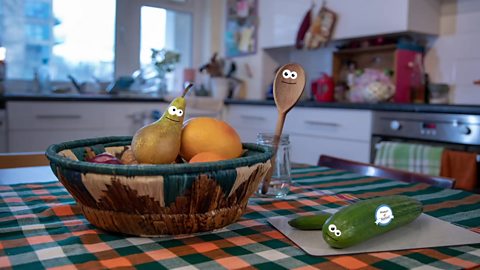
- count1 of 10
